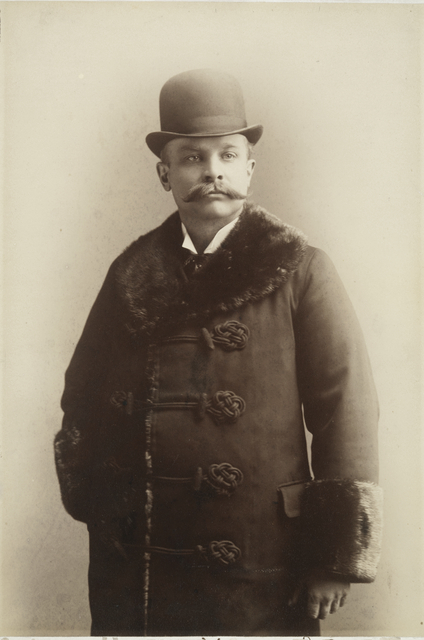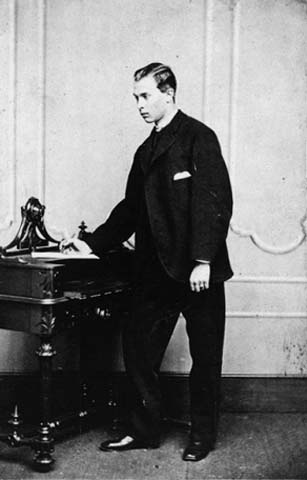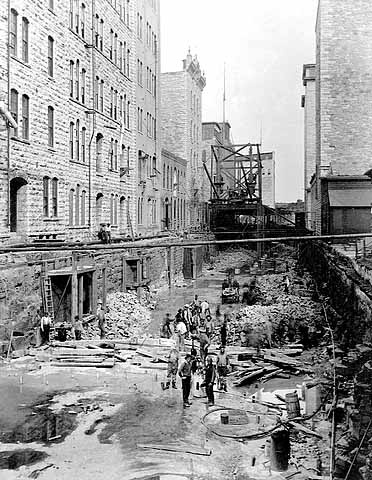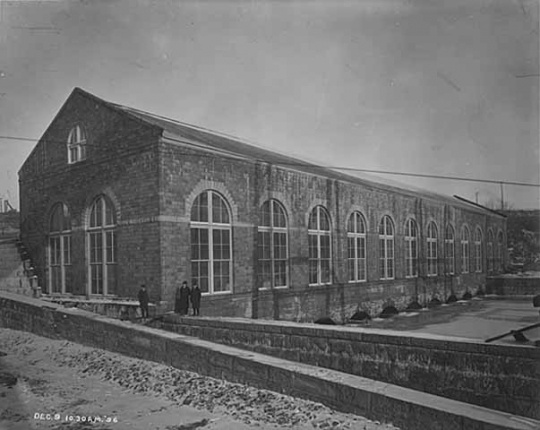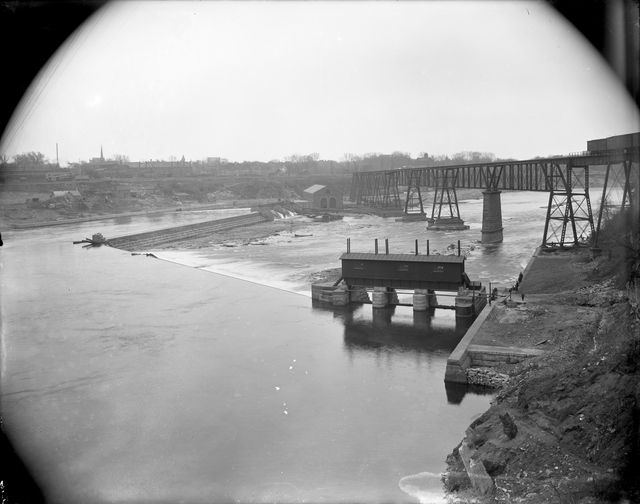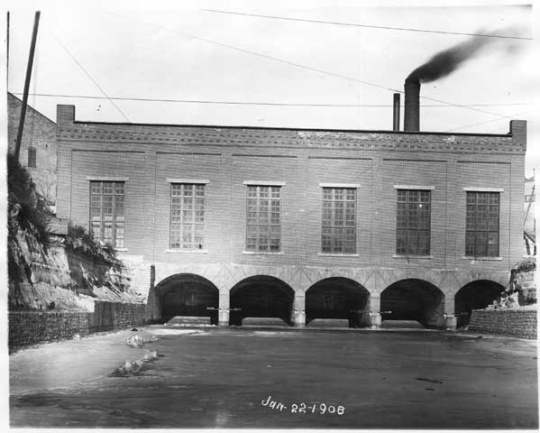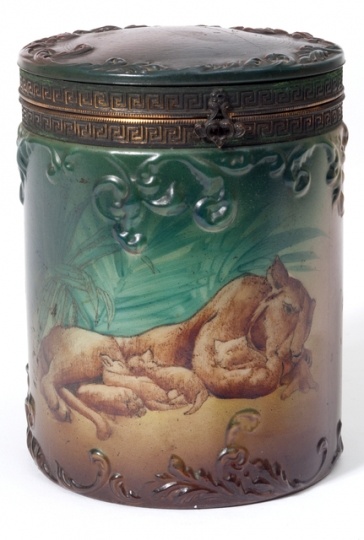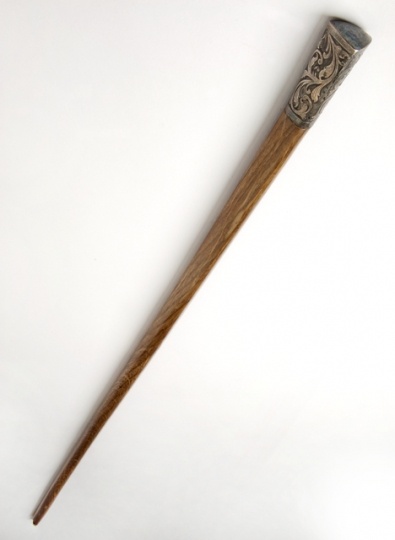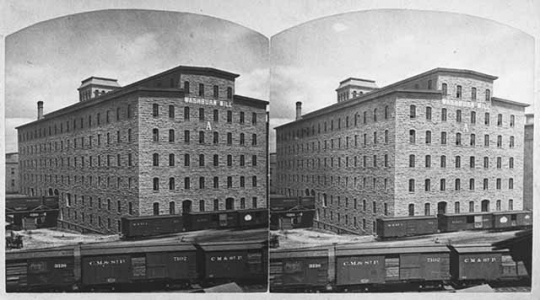De la Barre, William (1849–1936)
Bibliography
Anfinson, John O. "Spiritual Power to Industrial Might: 12,000 Years at St. Anthony Falls." Minnesota History 58, no. 5 and 6 (Spring/Summer 2003): 252–269.
http://collections.mnhs.org/MNHistoryMagazine/articles/58/v58i05-06p252-269.pdf
De la Barre, William. "Recollections of a Milling Engineer." Northwestern Miller 105, no. 13 (March 29, 1916): 851, 852, 871.
Edgar, William C. The Medal of Gold. Minneapolis: The Bellman Company, 1925.
Gray, James. Business without Boundary: The Story of General Mills. Minneapolis: University of Minnesota Press, 1954.
Kane, Lucile M. The Falls of St. Anthony: The Waterfall that Built Minneapolis. St. Paul: Minnesota Historical Society Press, 1987.
"Last Stone Laid." Minneapolis Tribune, March 21, 1897.
Meyer, Herbert W. "History of St. Anthony Falls Water Power Co. and Minneapolis Mill Co." Reprinted from Our Shield (November 1955-March 1956): 80–97.
"Mill Explosion in 1878 Put Minneapolis On Map and Brought Opportunity to William de la Barre, Mill Engineer." Minneapolis Journal, February 20, 1921.
"Old Friends and Associates Pay Tribute to Pioneer Miller at 74th Birthday Dinner—Active in Industry Here Since 1878." Minneapolis Journal, January 29, 1924.
"Opposed to the Stone Arch Bridge." Minneapolis Tribune, September 18, 1885.
Pearson, Marjorie, Penny A. Petersen, and Nathan W. Olson, Hess, Roise and Company. Mill Ruins Park Research Study. Prepared for the Minneapolis Park and Recreation Board, May 2003.
Pennefeather, Shannon M., ed. Mill City: A Visual History of the Minneapolis Mill District. St. Paul: Minnesota Historical Society Press, 2003.
Petersen, Penny A. and Marjorie Pearson, Hess, Roise and Company. Architecture and Historic Preservation on the Minneapolis Riverfront. Prepared for the Saint Anthony Falls Heritage Board, March 2007.
"'Sage of the River' Says Bridge is Safe." Minneapolis Tribune, October 28, 1913.
Saint Anthony Falls Rediscovered. Minneapolis: Minneapolis Riverfront Development Coordination Board, 1980.
Watts, Alison. "The Technology that Launched a City: Scientific and Technological Innovations in Flour Milling during the 1870s in Minneapolis." Minnesota History 57, no. 2 (Summer 2000): 86–97.
http://collections.mnhs.org/MNHistoryMagazine/articles/57/v57i02p086-097.pdf
Chronology
1849
1866
1876
1878
1880
1881
1889
1897
1899
1924
1936
Bibliography
Anfinson, John O. "Spiritual Power to Industrial Might: 12,000 Years at St. Anthony Falls." Minnesota History 58, no. 5 and 6 (Spring/Summer 2003): 252–269.
http://collections.mnhs.org/MNHistoryMagazine/articles/58/v58i05-06p252-269.pdf
De la Barre, William. "Recollections of a Milling Engineer." Northwestern Miller 105, no. 13 (March 29, 1916): 851, 852, 871.
Edgar, William C. The Medal of Gold. Minneapolis: The Bellman Company, 1925.
Gray, James. Business without Boundary: The Story of General Mills. Minneapolis: University of Minnesota Press, 1954.
Kane, Lucile M. The Falls of St. Anthony: The Waterfall that Built Minneapolis. St. Paul: Minnesota Historical Society Press, 1987.
"Last Stone Laid." Minneapolis Tribune, March 21, 1897.
Meyer, Herbert W. "History of St. Anthony Falls Water Power Co. and Minneapolis Mill Co." Reprinted from Our Shield (November 1955-March 1956): 80–97.
"Mill Explosion in 1878 Put Minneapolis On Map and Brought Opportunity to William de la Barre, Mill Engineer." Minneapolis Journal, February 20, 1921.
"Old Friends and Associates Pay Tribute to Pioneer Miller at 74th Birthday Dinner—Active in Industry Here Since 1878." Minneapolis Journal, January 29, 1924.
"Opposed to the Stone Arch Bridge." Minneapolis Tribune, September 18, 1885.
Pearson, Marjorie, Penny A. Petersen, and Nathan W. Olson, Hess, Roise and Company. Mill Ruins Park Research Study. Prepared for the Minneapolis Park and Recreation Board, May 2003.
Pennefeather, Shannon M., ed. Mill City: A Visual History of the Minneapolis Mill District. St. Paul: Minnesota Historical Society Press, 2003.
Petersen, Penny A. and Marjorie Pearson, Hess, Roise and Company. Architecture and Historic Preservation on the Minneapolis Riverfront. Prepared for the Saint Anthony Falls Heritage Board, March 2007.
"'Sage of the River' Says Bridge is Safe." Minneapolis Tribune, October 28, 1913.
Saint Anthony Falls Rediscovered. Minneapolis: Minneapolis Riverfront Development Coordination Board, 1980.
Watts, Alison. "The Technology that Launched a City: Scientific and Technological Innovations in Flour Milling during the 1870s in Minneapolis." Minnesota History 57, no. 2 (Summer 2000): 86–97.
http://collections.mnhs.org/MNHistoryMagazine/articles/57/v57i02p086-097.pdf











